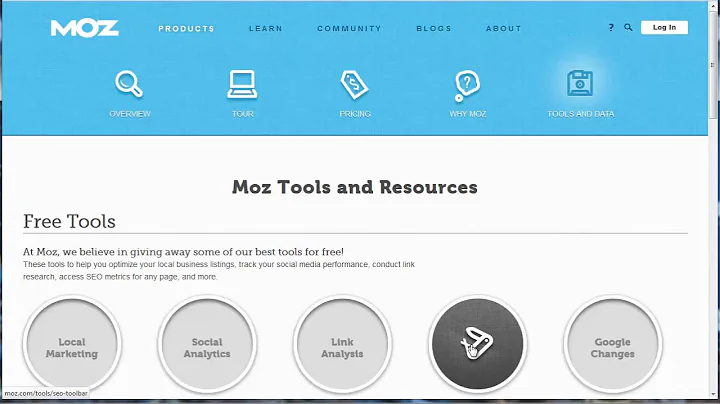Boost Your Squarespace Site's Visibility with These 12 SEO Steps
Table of Contents:
- Introduction
- Register Your Site with Google Search Console and Bing Webmaster Tools
- Ensure Your Squarespace Site Loads Quickly
- Do Your Keyword Research
- Get Your Page and Product Titles Right
- Use Headings Properly
- Use Engaging Meta Descriptions
- Ensure Your Product Titles and Descriptions are Unique
- Optimize Your Alt Text and Image Names
- Use Clean URLs
- Add Rich Snippets to Your Products and Pages
- Use Your Squarespace Blog to Drive Traffic
- Build Backlinks to Your Site
- Conclusion
💡 Highlights:
- Improve your Squarespace site's organic traffic and sales
- Register your site with Google Search Console and Bing Webmaster Tools
- Optimize your site's speed and loading time
- Conduct thorough keyword research to improve search rankings
- Optimize page and product titles
- Use proper headings and engaging meta descriptions
- Ensure unique product titles and descriptions
- Optimize alt text and image names
- Use clean URLs for better search optimization
- Add rich snippets to provide additional information
- Utilize your Squarespace blog to drive traffic
- Build backlinks to improve SEO rankings
Introduction
In this guide to Squarespace SEO, we will walk you through the key steps you need to take to ensure that your Squarespace site ranks highly in search results. Whether you're a beginner or an experienced user, these tips will help you increase your site's organic traffic and boost sales. So, let's dive in and explore the world of Squarespace SEO optimization.
Register Your Site with Google Search Console and Bing Webmaster Tools
The first step in optimizing your Squarespace site for search engines is to register it with Google Search Console and Bing Webmaster Tools. By doing so, you inform these search engines about your website and help it get indexed faster. Squarespace makes it easy for you by automatically generating a sitemap, which you can submit to these services. Registering your site with these tools is a crucial starting point for Squarespace SEO.
Ensure Your Squarespace Site Loads Quickly
Search engines prioritize fast-loading sites, so it's essential to ensure that your Squarespace site loads quickly. One way to achieve this is by avoiding the use of a large number of web fonts and minimizing the use of external scripts. Additionally, compressing your store's images using tools like Tiny Png can significantly reduce their size and improve loading times. Switching off animation effects can also contribute to a faster-loading site.
Do Your Keyword Research
Keyword research plays a vital role in improving your Squarespace site's search rankings. To optimize your store's pages and products, you need to identify the keywords that people are using when looking for sites or products like yours. This involves finding keywords with a good search volume that are not overly competitive. Dedicated keyword research tools like Ahrefs or Semrush can provide valuable insights into the popularity and difficulty of ranking for specific keywords.
Get Your Page and Product Titles Right
The titles of your web pages and products are crucial elements for SEO. Search engines consider them as key pieces of information when categorizing your content, and they often show up as the largest component of a search result. Ensure that your Squarespace web page titles are clear, concise, and start with your target keyword. Squarespace provides easy editing options for page titles in the SEO section of your dashboard. Similarly, you can edit title tags for products and blog posts using the SEO settings.
Use Headings Properly
Instead of merely using bold text to break up the content on your Squarespace pages or products, make proper use of headings (H1, H2, H3, etc.). Using headings helps search engines index your content accurately and makes it more accessible to users with visual impairments or screen readers. Appropriate heading tags also enhance the overall structure and readability of your Squarespace site.
Use Engaging Meta Descriptions
While meta descriptions may not be a direct ranking factor, they play a significant role in improving click-through rates. A well-written meta description can encourage more users to click through to your site, which, in turn, positively affects your search ranking. Keep the meta descriptions short, accurate, and inclusive of your target keywords. Squarespace provides an option to edit meta descriptions for various types of pages in the SEO settings of your dashboard.
Ensure Your Product Titles and Descriptions are Unique
When adding products to your Squarespace site, it's tempting to use the "Duplicate" option for quick content creation. However, this can lead to duplicated or similar titles and descriptions, which search engines dislike. To improve SEO, strive to make your product titles and descriptions as unique as possible. Unique content keeps your site fresh and avoids any negative impact on search rankings.
Optimize Your Alt Text and Image Names
Search engines consider images when indexing a website. To maximize their impact, optimize the alt text and image file names. Alt text provides textual descriptions for images, aiding users with visual impairments and helping search engines understand the image content. When adding alt text, make sure to include relevant target keywords while still maintaining clarity. Additionally, create concise and keyword-rich file names for your images.
Use Clean URLs
Using clean, SEO-friendly URLs is encouraged by search engines, including Google. Clean URLs are concise, simple, and easy to understand. When creating URLs for your Squarespace pages or products, aim for clarity and brevity. Instead of long and complicated URLs, opt for short and descriptive slugs that accurately represent the content. Squarespace provides options to edit URLs in the page, product, or post settings of your dashboard.
Add Rich Snippets to Your Products and Pages
Rich snippets are structured data elements that provide additional information about the content of a page. By adding rich snippets to your Squarespace products and pages, you can help search engines and users better understand the content and context. Rich snippets can include star ratings, author information, prices, and more. To add structured data to your Squarespace site, you'll need to manually add Schema markup code. Resources in the video description can guide you through this process.
Use Your Squarespace Blog to Drive Traffic
A well-maintained blog can significantly impact your Squarespace site's search performance. Sites that regularly publish in-depth and informative blog posts tend to perform better in search results. Utilize Squarespace's blogging tool to create high-quality, niche-specific content that addresses topics your target audience is interested in. Consistently posting engaging blog posts will increase your site's visibility and drive organic traffic.
Build Backlinks to Your Site
Backlinks, or links from another site to yours, are essential for SEO. Search engines consider backlinks as votes of confidence for the quality of your content. The more backlinks your Squarespace site has, the better it will rank in search results. Building backlinks can be challenging, but creating strong, valuable content increases the likelihood of other site owners linking to your content. Avoid buying links or participating in link swap schemes, as these practices can lead to penalties from search engines.
Conclusion
In conclusion, optimizing your Squarespace site for search engines is crucial for increasing organic traffic and driving sales. By following the 12 key tips outlined in this guide, you can improve your Squarespace SEO and enhance your site's visibility. Remember to register your site with search engine tools, optimize loading times, conduct keyword research, optimize titles and descriptions, use headings properly, and leverage other strategies like rich snippets, blog optimization, and building backlinks. With these steps, you'll be well on your way to improving your Squarespace site's search rankings and attracting more visitors.
FAQ:
Q: How can I register my Squarespace site with Google Search Console and Bing Webmaster Tools?
A: To register your Squarespace site with Google Search Console and Bing Webmaster Tools, you can follow the instructions provided by these services. Squarespace also offers detailed guides on how to register and verify your site with these tools.
Q: How can I improve the loading time of my Squarespace site?
A: To improve the loading time of your Squarespace site, you can implement several strategies, including reducing the use of web fonts, compressing images, minimizing the use of external scripts, and disabling animation effects. Squarespace provides options and recommendations for optimizing site speed.
Q: How do I perform keyword research for my Squarespace site?
A: Keyword research involves finding keywords that people are using when searching for sites or products like yours. Dedicated keyword research tools like Ahrefs or Semrush can provide valuable insights into keyword popularity and competition. These tools allow you to identify keywords that generate significant traffic without high competition.
Q: Can I duplicate product titles and descriptions on my Squarespace site?
A: While Squarespace offers the option to duplicate content, it's best to avoid duplicating product titles and descriptions. Search engines dislike duplicate content, and creating unique titles and descriptions can positively impact your site's search rankings.
Q: How do I add alt text and optimize image names on Squarespace?
A: Squarespace offers options to add alt text for images within your pages or posts. When adding alt text, include relevant keywords while ensuring it makes sense to users, including those who use screen readers. You can also optimize image names by using concise and keyword-rich file names.
Q: What are clean URLs, and how do I create them on Squarespace?
A: Clean URLs are short, simple, and descriptive URLs that are easy to understand and remember. To create clean URLs on Squarespace, you can edit the URL slugs of your pages, products, or posts in the relevant settings. Squarespace provides options to edit URLs and also recommends creating redirects when changing existing URLs.
Q: How can I add rich snippets to my Squarespace products and pages?
A: Adding rich snippets involves manually adding Schema markup code to your Squarespace pages or products. This structured data provides additional information to search engines and users. Resources in the video description can guide you through the process of adding rich snippets to your Squarespace site.
Q: How can I use my Squarespace blog to drive traffic?
A: You can use your Squarespace blog to generate traffic by regularly publishing high-quality and informative blog posts related to your product niche. By addressing topics that your target audience is interested in, you can attract more visitors and improve your site's visibility in search results.
Q: Are backlinks important for Squarespace SEO?
A: Yes, backlinks are crucial for Squarespace SEO. Search engines consider backlinks as votes of confidence for your site's content quality. Building backlinks can be challenging but creating valuable content increases the likelihood of other site owners linking to your Squarespace site.
Resources:







